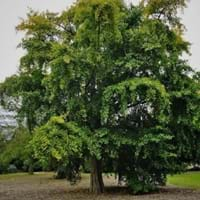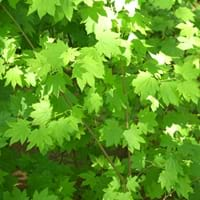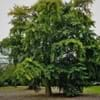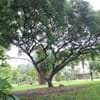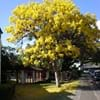Life Span
Perennial
Perennial
Origin
China
North America, Northwestern United States
Types
Not Available
Not Available
Habitat
Deciduous forests, Wild, Woods
Forests, gardens, Open Forest, Tropical regions, Wet forest
USDA Hardiness Zone
4-9
5-9
Sunset Zone
A3, 1a, 1b, 2a, 2b, 3a, 3b, 4, 5, 6, 7, 8, 9, 10, 12, 14, 15, 16, 17, 18, 19, 20, 21, 22, 23, 24
A3, 2b, 3a, 3b, 4, 5, 6, 14, 15, 16, 17
Habit
Upright/Erect
Clump-Forming
Flower Color
Yellow green
White, Purple
Flower Color Modifier
Bicolor
Bicolor
Fruit Color
Orange, Light Yellow, Tan
Red
Leaf Color in Spring
Light Green, Yellow green
Green, Light Green
Leaf Color in Summer
Green, Yellow green
Green, Light Green
Leaf Color in Fall
Yellow, Gold
Red, Orange, Dark Red, Orange Red
Leaf Color in Winter
Not Available
Not Available
Leaf Shape
Bi-lobed
Maple shaped
Plant Season
Spring, Summer, Fall, Winter
Spring, Summer, Fall, Winter
Sunlight
Full Sun
Full Sun, Partial Sun, Partial shade, Full Shade
Type of Soil
Clay, Loam, Sand
Clay, Loam, Sand
The pH of Soil
Acidic, Neutral
Acidic, Neutral, Alkaline
Soil Drainage
Well drained
Average
Bloom Time
Spring
Early Spring
Tolerances
Pollution, Drought, Salt, Soil Compaction
Wet Site
Where to Plant?
Ground
Ground
How to Plant?
Seedlings, Spores, Stem Planting
Stem Planting
Plant Maintenance
Medium
Medium
Watering Requirements
Requires watering in the growing season
Allow soil to be completely dry in between waterings, Requires consistently moist soil, Requires watering in the growing season, Water Deeply
In Summer
Lots of watering
Lots of watering
In Spring
Moderate
Moderate
In Winter
Average Water
Average Water
Soil pH
Acidic, Neutral
Acidic, Neutral, Alkaline
Soil Type
Clay, Loam, Sand
Clay, Loam, Sand
Soil Drainage Capacity
Well drained
Average
Sun Exposure
Full Sun
Full Sun, Partial Sun, Partial shade, Full Shade
Pruning
Remove damaged leaves, Remove dead branches, Remove dead leaves
Pinch or prune as they grow to promote branching and bushiness, Prune every year, Prune for shortening long shoots, Prune if you want to improve plant shape, Remove deadheads
Fertilizers
All-Purpose Liquid Fertilizer
All-Purpose Liquid Fertilizer
Pests and Diseases
Red blotch
Billbugs, Fungal Diseases, Red blotch
Plant Tolerance
Drought
Drought
Flowers
Insignificant
Showy
Flower Petal Number
Single
Single
Foliage Texture
Medium
Medium
Foliage Sheen
Matte
Matte
Attracts
Birds, Butterflies, Squirrels
Not Available
Allergy
Abdominal pain, Nausea, Throat itching, Vomiting
Not Available
Aesthetic Uses
Bonsai
Showy Purposes
Beauty Benefits
Acne, For treating wrinkles, Remove blemishes
Not Available
Environmental Uses
Air purification, Nesting sites for birds, Shadow Tree, soil erosion prevension on hill slopes
Air purification
Medicinal Uses
Aging, Alzheimer’s Disease, anti-allergy, anti-inflammatory, Blood anti-coagulant, Diabetes
Not Available
Part of Plant Used
Bark, Leaves, Seeds
Not Available
Other Uses
Can be made into a herbal tea, Condiment, Cosmetics, Medicinal oil
Not Available
Used As Indoor Plant
Sometimes
No
Used As Outdoor Plant
Yes
Yes
Garden Design
Feature Plant, Shade Trees, Street Trees
Feature Plant, Foundation, Mixed Border, Topiary / Bonsai / Espalier
Botanical Name
GINKGO biloba 'Chi-chi'
ACER circinatum
Common Name
Ginkgo
Oregon Vine Maple, Vine Maple
In Hindi
बालकुवारी
बेल मेपल
In German
Tempelbaum, Ginkgobaum
Wein-Ahorn
In French
Arbre sacré des temples d'Asie, Arbre aux mille écus
Maple Vine
In Spanish
Gingo, Árbol de oro
arce vid
In Greek
Γιγκο, Γκίνγκο
αμπέλου Maple
In Portuguese
Nogueira-do-Japão
bordo de videira
In Polish
Miłorząb chiński, Miłorząb dwudzielny
Vine Maple
In Latin
Gingko
vitis Maple
Phylum
Ginkgophyta
Tracheophyta
Class
Ginkgoopsida
Magnoliopsida
Order
Ginkgoales
Sapindales
Family
Ginkgoaceae
Aceraceae
Clade
Cycad
Angiosperms, Eudicots, Rosids
Tribe
Not Available
Not Available
Subfamily
Not Available
Hippocastanoideae
Number of Species
Not Available
Not Available
Importance of Ginkgo and Vine Maple
Want to have the most appropriate plant for your garden? You might want to know the importance of Ginkgo and Vine Maple. Basically, these two plants vary in many aspects. Compare Ginkgo and Vine Maple as they differ in many characteristics such as their life, care, benefits, facts, etc. Every gardener must at least have the slightest clue about the plants he wants to plant in his garden. Compare their benefits, which differ in many ways like facts and uses. The medicinal use of Ginkgo is Aging, Alzheimer’s Disease, anti-allergy, anti-inflammatory, Blood anti-coagulant and Diabetes whereas of Vine Maple is Not Available. Ginkgo has beauty benefits as follows: Acne, For treating wrinkles and Remove blemishes while Vine Maple has beauty benefits as follows: Acne, For treating wrinkles and Remove blemishes.
Compare Facts of Ginkgo vs Vine Maple
How to choose the best garden plant for your garden depending upon its facts? Here garden plant comparison will help you to solve this query. Compare the facts of Ginkgo vs Vine Maple and know which one to choose. As garden plants have benefits and other uses, allergy is also a major drawback of plants for some people. Allergic reactions of Ginkgo are Abdominal pain, Nausea, Throat itching and Vomiting whereas of Vine Maple have Not Available respectively. Having a fruit bearing plant in your garden can be a plus point of your garden. Ginkgo has no showy fruits and Vine Maple has showy fruits. Also Ginkgo is not flowering and Vine Maple is not flowering . You can compare Ginkgo and Vine Maple facts and facts of other plants too.
